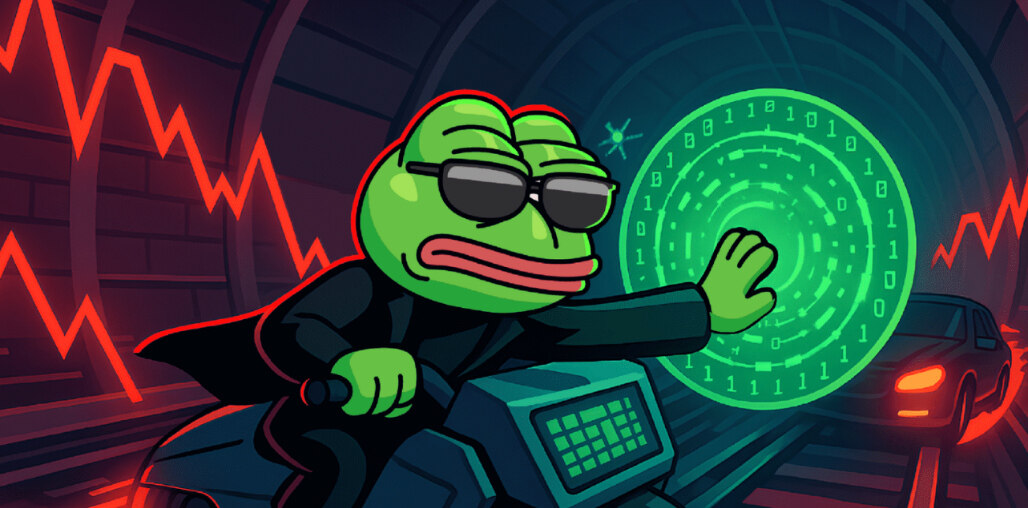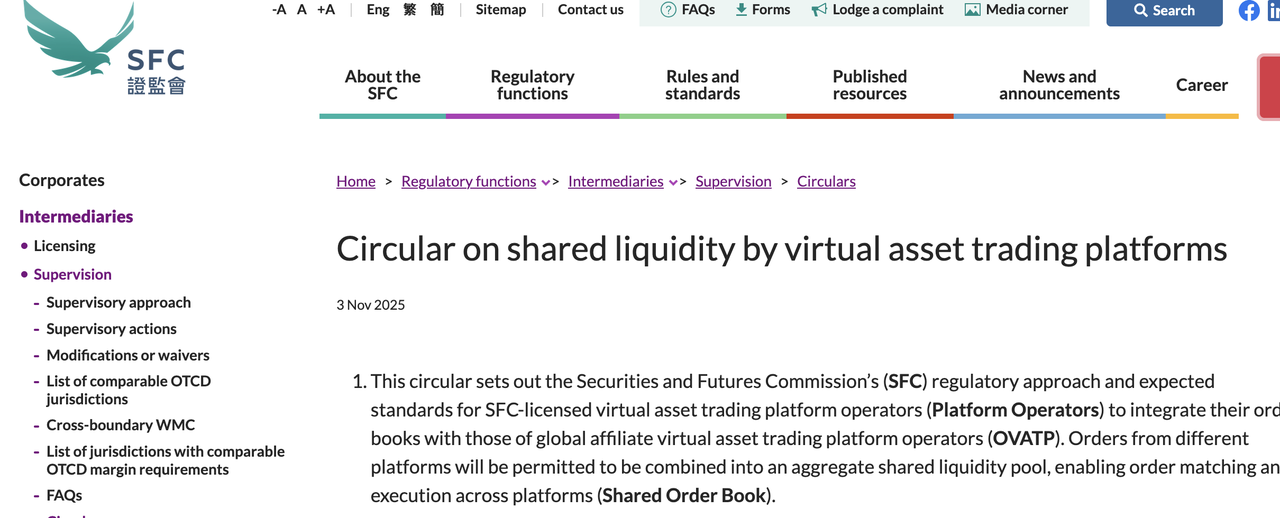Bitcoin, DEX, and Banks: The "Fast and Furious" Game - Is the Crash Just a Prelude to the Main Event?
- 核心观点:比特币暴跌是市场结构转型信号。
- 关键要素:
- DEX交易量逆势增长创历史新高。
- 香港开放全球订单簿接入新规。
- 传统银行加速布局区块链业务。
- 市场影响:推动去中心化与合规化并行发展。
- 时效性标注:中期影响
Opening: The sharp drop is just a preview of the main feature.
If you've seen *Furious 7*, you'll definitely remember that scene: Vin Diesel drives his red Lykan Hypersport from the Etihad Towers in Abu Dhabi, with Paul Walker in the passenger seat. The $3.4 million supercar leaps between skyscrapers—from one to another, then from the second to the third, the car arcing through the air, scattering shards of glass like diamonds, the engine screaming, and everyone's heart pounding in their chests.
Will it land or explode in the next second? Bitcoin is that Lykan.
After a sharp decline from its all-time high of $126,000 on October 6th, crypto assets experienced a cumulative pullback of approximately 20% from the end of October to the beginning of November, falling below the $100,000 mark. Billions of dollars in leverage collapsed like a multi-vehicle collision. The Federal Reserve's cautious interest rate cut rhetoric and the strengthening dollar acted like two rear-end collisions, exacerbating the disaster.
The headlines from major mainstream media outlets are already written: "Crypto Bubble Bursts," "Crypto Bull Market Turns into Bear Market," and "Crypto Winter Arrives Again."
At the very moment this horrific car accident occurred, the true racing gods—the smart money and astute traders who had all quietly disappeared—did not leave the scene.
They quietly switched to another track.

First clue: The underground racetrack suddenly became packed.
Data doesn't lie, but it does accelerate.
In October, when Bitcoin began its sharp decline, trading volume on decentralized exchanges (DEXs) did not shrink, but rather accelerated.
Take a look at these figures (Source: DefiLlama data):
- DEX trading volume: $613.3 billion (a 22.7% surge from September, setting a new all-time high)
- Uniswap: Soars from $106.5 billion to $170.9 billion (+60%)
- PancakeSwap: Jumps from 79.8 billion to 101.9 billion (+28%)
Key data: DEX's share of total trading volume jumped from 18.83% to 19.84%: That 1 percentage point represents hundreds of billions of dollars suddenly changing the game. It's like a massive traffic jam on the Tokyo Bay Expressway, and suddenly racers discover a secret entrance to the Shibuya underground parking garage—a place that's not only free of congestion, but also allows you to achieve faster lap times.
Meanwhile, centralized exchanges (CEXs) also hit a new high of $2.17 trillion, a 28% increase month-over-month. Binance, Gate, Bybit, and Bitget led the pack. This is a synergy of two engines: the traditional sector is accelerating, while the underground sector is even faster.
Why do racing legends choose "underground drifting"?
Do you remember the scene from the movie? The protagonist, Sean, was first taken to the underground parking lot in Shibuya and discovered that all the real racers in Tokyo were there—not on public racetracks, but drifting like madmen on the spiral ramps of a multi-level parking lot.
The DEX in October is that underground parking lot.
The chief information officer of Kronos Research stated, "Traders are flocking to on-chain not only for self-custody and transparency, but also for liquidity mining and airdrops, thereby maximizing participation."
A market crash doesn't force people to flee the market; rather, it forces them to re-evaluate their investment strategies. When traditional exchanges become like congested highways, smart money begins searching for new exits.
The second clue: Hong Kong is building a "new global race track".
The plot of the regulator has taken a turn.
Shortly after the explosion in DEX trading volume, the Hong Kong Securities and Futures Commission (SFC) issued two bombshell announcements in early November 2025:
- This allows SFC-licensed local exchanges to share global order books and connect with overseas platforms, thereby gaining access to global liquidity. This breaks the traditional "order pre-financing, domestic settlement" model, enabling investors to access global market liquidity more efficiently.
It's like installing a teleportation portal for local racing – suddenly, you can not only race on the Hong Kong circuit, but also instantly teleport to the circuits in New York, London, and Tokyo.
- The requirement for a 12-month trading history for the issuance of local tokens and stablecoins to professional investors has been relaxed, accelerating the launch of innovative products.
This means that new tokens and stablecoins no longer need to wait 12 months for a "training period" and can be directly opened to professional investors.
According to Julia Leung, CEO of the Hong Kong Securities and Futures Commission, this move aims to enable investors to more effectively utilize global market liquidity, achieve better price discovery, and access more competitive trading conditions.
What does this have to do with Bitcoin price fluctuations?
It has a great deal to do with it.
When Bitcoin crashes, traditional exchanges instantly run out of liquidity—just like in "Fast & Furious 8," where thousands of hacked zombie cars suddenly appear on the streets of New York, turning the entire Manhattan into a parking lot.
But if you have access to the global order book, it's like suddenly opening a portal to a parallel universe—while the market is panic-selling here, someone else might be frantically buying the dip there. Price discovery is faster, arbitrage opportunities are more numerous, and transaction costs are lower.
Good regulation is not about traffic lights, but about better road design.
What Hong Kong is doing is upgrading its "underground racetrack" into a "global superhighway".
The third clue: The bank owner suddenly said he wanted to "modify the engine".
The most conservative people have said the most radical things—and now, the most dramatic turn of events has arrived.
At Hong Kong Fintech Week, Standard Chartered CEO Bill Winters—a traditional financial banker who manages hundreds of billions of dollars in assets worldwide and wears bespoke suits—suddenly made a statement in public that sounded like something out of a science fiction movie:
"All transactions will ultimately be settled on the blockchain. All currencies will be digitized. The entire financial system will be completely rewired."

It's like FBI Director Hobbs in "Fast & Furious" suddenly saying, "Actually, we want to go fast too."
Even more outrageous, HSBC CEO Georges Elhedery proposed that the bank invest $1.36 billion to privatize Hang Seng Bank and turn it into a "financial innovation lab".
Why did the banker suddenly become a "modification fanatic"?
The answer is harsh: because they've discovered that DEXs and stablecoins are cannibalizing their business.
If you run the world's largest taxi company, and one day Uber not only appears but also starts offering private jet services, you have two choices:
A: Keep complaining about Uber's illegal operations—just sit and wait for your demise.
B: If you can't beat them, join them—build a better plane yourself.
Smart banks have chosen the second path: Standard Chartered and HSBC have both built blockchain labs in Hong Kong to test cross-border payments, stablecoin issuance, and asset tokenization—all things the Web3 industry is doing, but with the added label of "institutional trust" at the bank level.
Key question: When traditional banks begin to embrace blockchain, when regulators begin to build "compliant decentralized highways," and when DEX trading volumes hit new highs amidst market crashes—is this really still a "Bitcoin crash" story?
Spoiler Alert: A "Driver's Manual" for Investors

Post-credits scene: The real problem
When DEX trading volume exploded during the crash, when Hong Kong opened the door to global liquidity, and when a bank CEO said "the financial system needs to be rewired"—what do you think will happen next after the October crash?
My personal answer is: that's the sound of shifting gears.
(The End. Now you can rewatch "Fast & Furious" and then check your trading account.)





